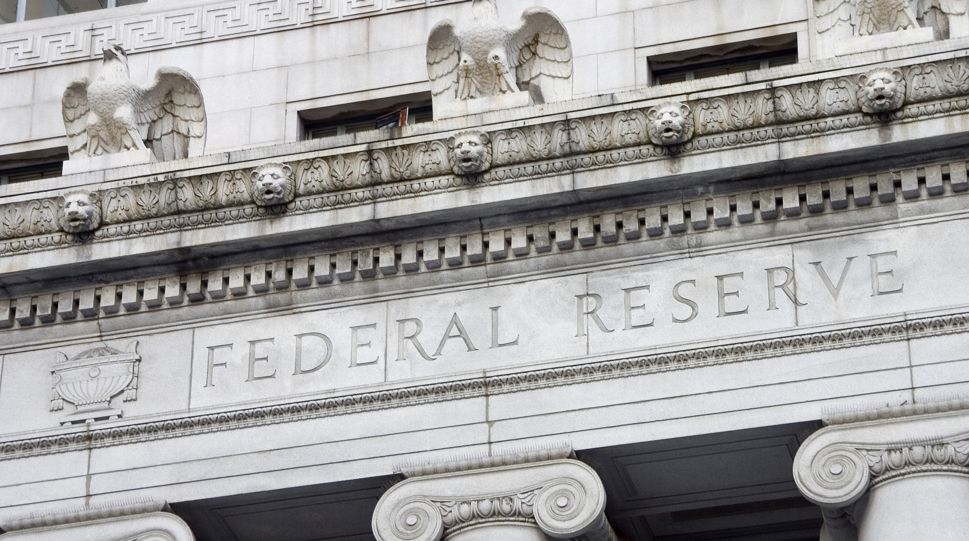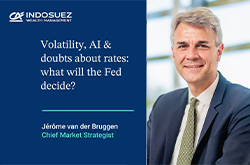A dilemma for Jerome Powell tonight?

In the past weeks, most of the FED’s hawks have been out in the media to advocate for a faster pace or rate hikes and balance sheet reduction. Given the U-turn in FED’s communication in December’s meeting and the messages contained inside the FED minutes, it appears complicated if not impossible now to back track on this and to push back the normalisation path. Making another U-turn just a few weeks after the hawkish call of December meeting would raise a question mark on the FED credibility in terms of strategy and communication. Before the surge of volatility these past few days, it seemed that the market was showing some capacity to absorb this normalisation and adapt to this change.
But of course the environment of the past few days tells a different story and creates a dilemma. Why?
Firstly, because the massive and unexpected drop of US activity indicators published on Monday (with a composite Flash PMI down from 57 to 50,8 between December and January) sends a weak signal regarding the US economic trend. Of course, one could look back and see that this type of drop happened in the past already: indeed, this indicator is by nature volatile and the same PMI fell abruptly by 5 points in July before recovering in September. But this time, it could be for real that the US economy is no longer accelerating, as PMIs return to par around 50. We expected that 2022 would be a year of normalisation of the growth rate; and we expected that Q1 activity indicators would be affected by Omicron. But probably not that indicators would fall of the cliff so abruptly. To reflect this, the Citi Economic Surprise Indicator in the US is now in negative territory.
Secondly, due to the violent surge of volatility (with a VIX above 35) and the market corrections are worsening the US financial conditions that are often commented by Jerome Powell as a dimension integrated by the FED to assess whether the economy as a whole is strong enough to absorb a monetary normalisation.
Thirdly, because the rise in geopolitical risks could represent a headwind for the economic activity in the first part of the year, either through the investment channel (more uncertainties have driven companies to delay some investments) or through the inflation channel (energy prices fueled by Eastern Europe tensions) that could weigh on the consumers’ purchasing power.
In the past, a hawkish FED meeting in times of market volatility and worsening economic data never went well on financial markets. Everyone remembers the rate hike of December 2018 when PMIs were down which led to the S&P 500 to lose 14% in Q4. Recession fears reached a climax. The FED implicitly acknowledged it was a mistake and made a communication U-turn in early January 2019 to signal upcoming rate cuts. This experience was brutal for markets and for the FED and it will probably serve as a lesson today.
Nevertheless, the FED needs to act on inflation, and has realised that it is easier to raise rates when the economy is still growing than when it is already slowing down. Hence, a possible change of appreciation on a key point; until last fall, the FED was advocating that it needed to wait for full employment to raise rates (contrary to previous cycles where normalisation started in the middle of the economic cycle). The FED realised in December -probably a bit late already- that it was more appropriate to hike sooner than later.
All that being said, what can we expect from tonight’s press conference from J. Powell?
We expect that he will confirm the largely anticipated first rate hike in March. Speculation remains open if it is a quarter or half percentage point.
We also anticipate that he may use a cautious language as customary in order to offset the hawkish rate path; he will probably add some language on the geopolitical risks, on the macro uncertainties caused by the Omicron wave and on the worsening financial conditions.
On the back of these interpretations, Jerome Powell could signal that the outlook for rate hikes beyond March will be largely dependent on the economic environment: a way to say that the December dot plots are neither a commitment nor something cast in stone. We have to highlight at this point that markets may have overbought the hawkish turn of the FED by anticipating more than 4 rate hikes in early January after the FED minutes publication. This FOMC meeting could be used to confirm more reasonable expectations, which already cooled down in the past few days.
Finally, the language and details around the balance sheet reduction could be softer than what the hawkish tenors of the FOMC have expressed in the past week. This point is where market attention will be very strong. Indeed, so far we do not really know how fast and at which magnitude the FED intends to reduce a balance sheet that has doubled since the pandemic. Some numbers have been discussed by economist and strategists in the media on the back on the analysis of the balance sheet (with $1,5 to $2tn maturing in 2022-2023). On this, we can remember that last year, Jerome Powell was openly reluctant to conduct simultaneously tapering and rate hikes, and was pushing for sequencing the actions or at least the announcements (tapering and then rate hikes). This is where the FED made no commitment so far and retains full flexibility.
The impact of this upcoming FED meeting on markets is far from being negligible:
- If the Fed proceeds with the message on a rate hike in March, but reassures markets with a cautious and pragmatic tone on the upcoming rate hikes and quantitative tightening, the rebound engaged today can accelerate.
- If the Fed calls off the rate hike, the market reading will be very volatile: equity investors could buy the return of the Fed put, but the justification can only come from a bearish view on the cycle, and this would question Fed credibility and capacity to control inflation, so the end game would most likely be negative.
- If the Fed maintains a hawkish tone in line with the minutes and the recent communications from Fed members, and despite a slower macro trend, market volatility could come back to Monday’s levels and a correction could resume.
January 26, 2022




